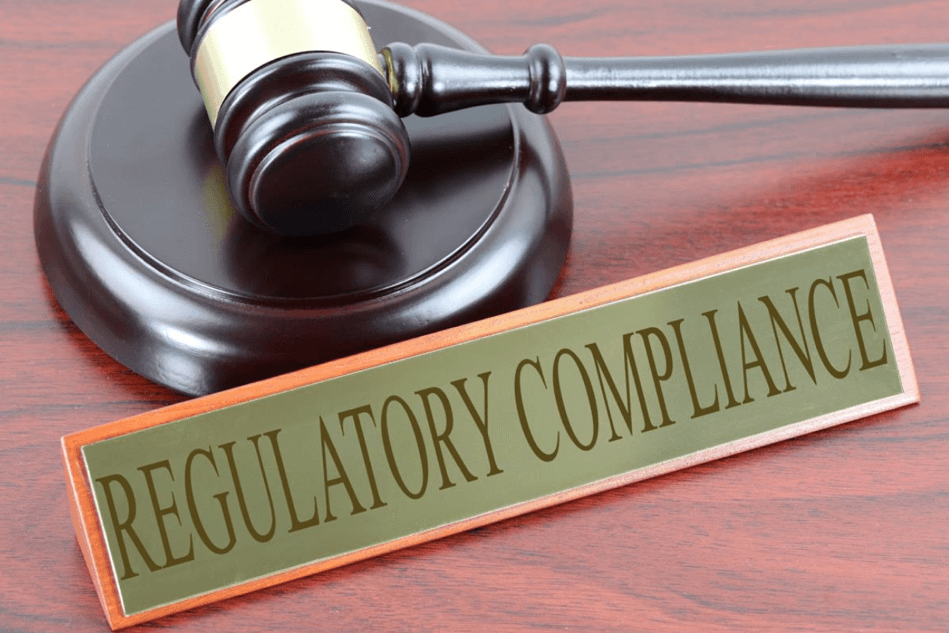Photo Credit: Regulatory Compliance by Nick Youngson CC BY-SA 3.0 Alpha Stock Images
Regulatory Compliance has become paramount to corporations since the turn of the century, maybe just as important as profit and loss numbers. As we fasten our seat belts to maneuver in the fast-changing digital world, regulations are changing swiftly too. Quite frankly, the number of regulations that organizations must be compliant with can easily become overwhelming.
Basel norms, the Dodd-Frank Act, the Payment Card Industry Data Security Standard (PCI DSS), the Health Insurance Portability and Accountability Act (HIPAA), the Federal Information Security Management Act (FISMA), the Sarbanes-Oxley Act (SOX), the Regulation National Market System (Reg NMS), the EU's General Data Protection Regulation (GDPR), and the California Consumer Privacy Act (CCPA) are some impactful regulations, to name only a few that have been implemented in the last few decades.
With everything becoming digitized these days, the amount of Customer Confidential Information (CCIs) that businesses gather makes regulatory compliance around data privacy and data protection a ‘must’ on every organization’s to-do list.
Failing to become compliant can become an organization’s worst nightmare. Non-compliance results in legal punishments, fines adding up to millions of dollars, lawsuits, loss of market-share, a plunge in stock prices, and, worst of all, public embarrassment and a tarnished brand image. It can take a company years to recover from such a blow. Even non-willful violations have irreversible and adverse effects on a company’s future.
Compliance with the plethora of regulations that have been passed may feel like an impossible goal. However, Master Data Management (MDM), with its inherent capabilities, is an essential tool for businesses looking to achieve corporate compliance. Let’s see how.

Regulatory Framework with MDM
MDM, by design, is equipped to ingest data from various source systems and domains. Once ingested, MDM lets you cleanse, standardize, enrich, match, and merge (consolidate) that data to produce master data.
While designing an MDM system and architecture, compliance-related rules can be baked into the cleanse, match, trust, and merge processes. This means the final master data will have the required flavors of regulations. Some of the most widely implemented regulatory requirements across many industry domains are de-duplication, cleansing and standardization, enriching addresses, and hierarchical relationships.
Regulatory compliance owners should be stakeholders of the MDM system so they can make sure the system is aligned with the company’s compliance goals.
MDM can also be designed as a federated, foundational, reference data management system to provide a 360o view of business-critical data attributes. This enables the regulatory and audit teams to extract compliance-related data, check the extent of compliance across each system, domain, and the entire corporation, and build compliance reports. The C-level executives can take knowledgeable strategic calls to make the organization a hundred percent regulatory compliant and thriving one.

Advantages of Regulatory Compliance thru MDM
Incorporating an organization’s regulatory compliance framework within MDM has significant advantages; it can do wonders to your regulatory compliance if the entire framework is fully integrated with MDM. Some potential benefits are:
Centralize Compliance Efforts: By establishing a unique regulatory framework in one place thru MDM, organizations can avoid wasting time and money, which are usually spent on performing business process management changes (individual system and domain level)and buying new technology/tools for compliance solutions. Organizations can leverage MDM to streamline their compliance efforts and use the same resources to tackle real-world business challenges and provide business value.
Financially, a sound option: MDM is not merely a regulatory compliant aid, but also provides a strong foundation for a company’s digital transformation and/or data governance journey. Master Data has the potential to drive strategic business initiatives. So, the ROI would be quite handsome.
Accurate Compliance Reporting: MDM identifies data quality issues, corrects them, and builds the required monitoring and alerts to stay abreast of data conditions. It also boosts the overall visibility and traceability of data, ensuring correctness in regulation compliance reporting.
Adaptability to Regulatory Changes: The centralized compliance framework designed with MDM can be agile, highly scalable, and flexible enough to incorporate never-ending changes in regulations. Regulatory changes can be seamlessly incorporated when the compliance framework is tightly coupled with MDM.
Lessen the Efforts: MDM acts as a single system of records for all business-critical data across the enterprise. Thereby compliance, legal, and audit teams can find most of the data required to prove compliance in one single place, reducing their efforts scrambling to locate data in various places.
Security for Regulatory Data: MDM has a powerful security framework built-in, plus the ability to integrate with standard third-party security tools and frameworks. MDM provides various levels of access, privileges, and audience-specific views to control data visibility and manipulation, ensuring regulatory data is not tampered with.

MDM – Regulatory Compliance Use Cases
De-duplication
MDM’s match and merge process de-duplicates data to generate the best version of the truth. This frees regulatory reports of duplicates and redundancies.
Know Your Customer (KYC)
KYC is one of the most basic requirements of compliance for any organizations in any industry. MDM with its Party Master solution (master individual and organization information) can provide holistic, detailed, trusted customer (individuals and organizations) information such as name, addresses, identifiers (Driver’s License, SSN, Tax IDs, Insurance IDs), demographics, social media content and customer-to-account relationships, helping the compliance team to flag the customers with incomplete KYC.
History and Lineage
The ability to store a history of all changes and the lineage of how the duplicates have merged, is often a necessary requirement to support compliance. Additionally, any compliance initiative will require an audit of such data changes over several years. MDM has cross-reference and history keeping capabilities which are very handy when tackling this requirement.
Keep a Close Watch on Regulatory Risks
MDM can provide a 360-degree view of customers (both individuals and organizations) to applications supporting AML, OFAC, sanctions, embargos, fraud analysis. This means they can determine compliance to regulatory standards pertaining to the aforesaid critical aspects. This also aids organizations in monitoring their customers’ activities and taking proactive measures to mitigate regulatory risks.
Conclusion
Regulatory Compliance is neither an option nor a choice; it is a mandate for corporations. Regulatory Compliance is a critical undertaking but often gets pushed to the back burner since it is mistakenly considered to be a ‘high-risk, low-reward’ task.
MDM is an apt solution financially and strategically because it puts the organization on a fast-track to digital transformation, masterfully equips organizations to keep up with constantly changing regulations, and streamlines compliance efforts at the enterprise level with its core-capabilities. Regulatory Compliance is just one of the value propositions of MDM (among many more) that contributes to businesses in a tangible way.

Posted by PDI Marketing Team
Pacific Data Integrators Offers Unique Data Solutions Leveraging AI/ML, Large Language Models (Open AI: GPT-4, Meta: Llama2, Databricks: Dolly), Cloud, Data Management and Analytics Technologies, Helping Leading Organizations Solve Their Critical Business Challenges, Drive Data Driven Insights, Improve Decision-Making, and Achieve Business Objectives.


